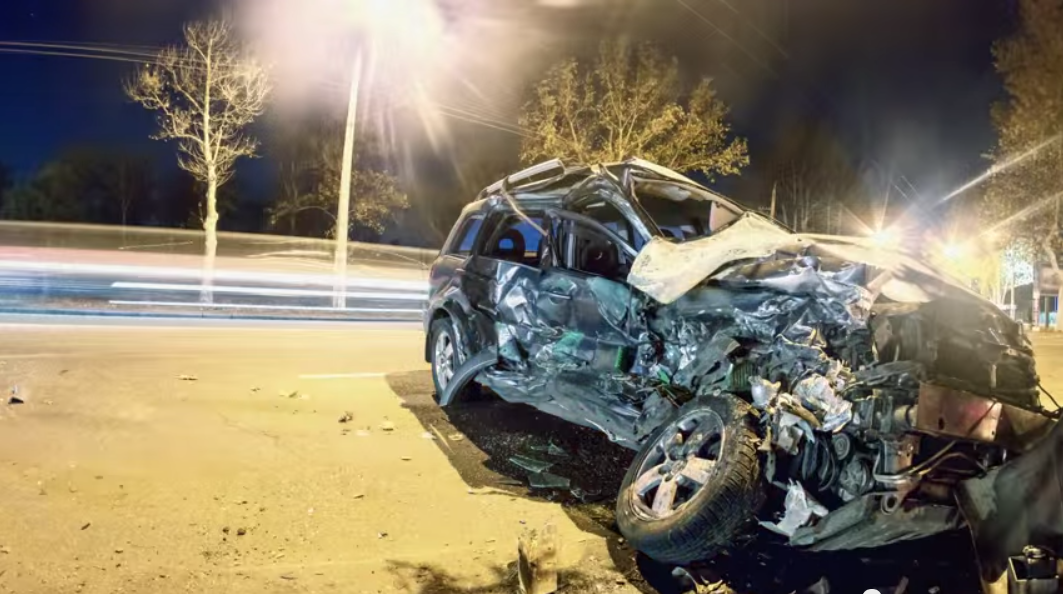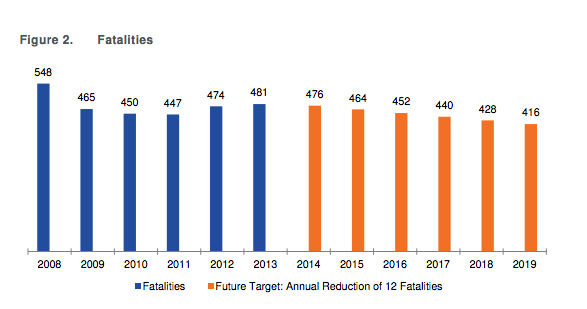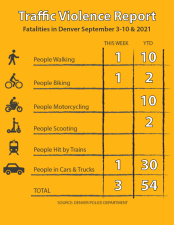CDOT’s ‘Bold’ Plan to Reach ‘Intermediate Goal’ of Fewer Traffic Deaths

It’s 2015 and Denver is urbanizing as fast as anywhere else in the country. We’re still on the upslope of density, transit, and walkable and bikeable infrastructure. Which means there’s a ton of work to do to create great urban streets where people come first and cars no longer dominate.
The Colorado Department of Transportation’s adoption of the Toward Zero Deaths campaign could have been an opportunity to align policy around safety, and to design Denver’s state-controlled streets with the demands of a rapidly growing city in mind. Instead, it’s a rehash of old ideas, with timid goals.
Toward Zero Deaths is a national traffic safety campaign that CDOT signed on to in March. As Streetsblog USA’s Angie Schmidt pointed out back then, the problem is that the campaign recycles the same ideas that have been in practice for 40 years: seat belt use, reducing drunk driving, improving the safety of both elderly and very young drivers. Nothing new that would change the fact that the U.S. is falling behind the rest of the developed world on traffic safety.
CDOT Director Shailen Bhatt called the plan “bold.”
Bold would be something along the lines of what Seattle and New York are striving for with their Vision Zero programs — the elimination of traffic deaths in the next ten years.
But in adopting “Toward Zero Deaths,” CDOT officials instead laid out what they call “realistic interim goals.” The hard target they’re striving for is “reducing [statewide] fatalities from 548 in 2008 to 416 by 2019.”
Note how CDOT made its target look more ambitious by choosing 2008 as the baseline instead of 2015, the year it adopted the initiative:

There are some good but vague bullet points on biking and walking safety that CDOT has incorporated into its Strategic Highway Safety Plan as a result of adopting Toward Zero Deaths. Here they are verbatim:
- Investigate and research the effectiveness of technology, countermeasures or design which impact bicyclist and pedestrian crashes.
- Reduce motor vehicle speeds through use of new and proven countermeasures, technology and design to provide safer bicycling and safer access for walking where appropriate.
- Improve bicyclist and pedestrian safety at high crash locations through implementation of new and proven technology, design, and countermeasures.
CDOT also says it will implement design measures like curb and intersection bulb-outs, “right sizing the roadway,” roundabouts, medians, and pedestrian refuge areas. But the Strategic Highway Safety Plan is meant to guide policy in the broadest, least specific sense. It does not get down to the level of individual projects, and its prescriptions for bike and pedestrian safety could very well end up gathering dust.
Meanwhile, on the ground, CDOT is widening Federal Boulevard. And that’s completely antithetical to reducing traffic deaths, seeing as how Federal and Colfax Avenue are CDOT state highways where most of the pedestrian deaths in Denver this year have happened.
In 2012 pedestrian deaths in Denver accounted for nearly a quarter of all pedestrians killed in Colorado. As long as CDOT is widening urban streets and not redesigning them for walking and biking, its framework for decreasing traffic fatalities won’t be good for much.


